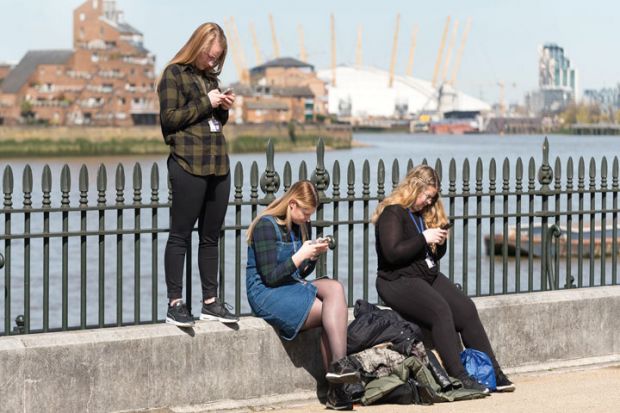Academics who were early adopters of social media were greeted with dismissive attitudes. But now, with use of social media a ubiquitous feature of university life, a serious appraisal of the opportunities and challenges it brings is increasingly urgent.
Unfortunately, discussions about social media in higher education remain polarised between advocates and critics. The former group downplays the problems in their drive to encourage colleagues to break with the model of scholarship that Patrick Dunleavy described as the academic hermit “sitting alone on top of a pillar somewhere in academia and doing their level best to not communicate in any way with the outside world, or let any information about their work leak out”.
Meanwhile, the latter group sees platform capitalism weaving its way into the academy through social media, entrenching a narcissism that imperils the scholarly vocation.
What gets lost is a practical discussion about how to respond to this dark side, encompassing individual scholars and institutional frameworks as well as scholarly publishers, learned societies and trade unions, who all have a stake in how social media is regulated within the academy.
One of the most exciting features of social media is its capacity to ensure that even the most obscure knowledge can find an audience outside the academy. However, platforms like Twitter, YouTube and Instagram heavily encourage the pursuit of online popularity. Their business model revolves around increasing user engagement, accumulating attention and activity, something that online celebrities excel in.
While it is not true that every academic is at risk of becoming an aspiring influencer, there is a risk that academics buy into the pursuit of online influence in a counterproductive way.
The prominence of social media in the UK’s 2014 research excellence framework impact case studies and the ubiquity of social media training provided by universities, combined with the brutality of the labour market experienced by early career researchers, mean online popularity has become something which universities increasingly value. The risk is that we start to take social media too seriously, when for a long time most academics didn’t take it seriously enough.
The best way to guard against this is to have a clear sense of what you want to achieve and with whom you want to achieve it in using social media as an academic. Are you trying to engage with an audience outside the academy? If so, be specific about who, how you’ll reach them and how you’ll know when you do. Otherwise it’s easy to fall into a nebulous sense of the “general public” that you imagine you’re increasingly in contact with as your follower count increases.
Be clear about how much time you’re willing to spend on social media and find ways of being aware of how much time you are spending on it. Scheduling tools such as Buffer and Hootsuite can ensure you’re not perpetually dipping in and out of social media over the course of the day. Apps such as Timely, RescueTime, Moment and Freedom can help you analyse how much time you are spending, as well as helping you keep this in control by blocking access for periods of time.
However, this is a matter of individual behaviour, while there is now widespread awareness of the harassment encountered by women, BAME, LGBT and disabled scholars online, particularly when they speak out on political issues. The more nuanced muting and blocking settings that platforms have introduced in recent years (such as muting mentions from non-followers on Twitter) can help make these problems more manageable but they don’t address them in any meaningful way.
In an increasingly polarised society, in which academic speech online is becoming increasingly contested, it seems likely that the social and political risks of engagement through social media are only going to increase.
Social media didn’t create these dangers. There is a dark side to the impact agenda, as Alison Phipps observed in a prescient piece in 2014 about how the risks and rewards of research impact are unequally distributed. Those with social and cultural capital, resembling the stereotypical image of the intellectual or scientist, will find it easier to be taken seriously while those who don’t are more likely to be subject to abuse, ranging from mansplaining (“well actually I think you’ll find”) through to organised campaigns of harassment.
Platforms such as Twitter intensify this problem by collapsing the distance between author and public, as well as multiplying opportunities for interaction. Unfortunately it is precisely the characteristics that make social media sites exciting tools for public engagement that make their dark side so toxic. If social media is here to stay within the academy then we urgently need to get to grips with these broader challenges too.
Mark Carrigan is a postdoctoral research associate at the Faculty of Education, University of Cambridge, and the author of Social Media for Academics, published by Sage.
后记
Print headline: Don’t be enslaved by likes and clicks


